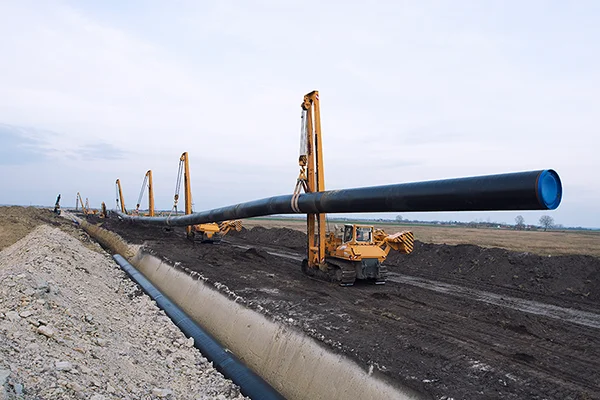How Can Heavy Engineering and Industrial Product Manufacturers Cut R&D Costs for New Product Development?
Innovation is one of the most effective methods of staying ahead of competitors. However, innovation can only be achieved by spending a percentage of a companies turnover on research and development (R&D). Despite this, spending resources on R&D does not always guarantee a favorable return on investment (ROI). The amount spent on R&D differs significantly between industries, with the heavy engineering industry spending approximately 11% on R&D, and the consumer goods industry spending around 8% on R&D in comparison. These are often significant amounts of capital to risk, especially due to the fact that R&D spend is not an indicator of market success. A successful R&D campaign needs to manage risk which is typically divided into two types:
- Technical Risk – Can a company successfully develop new technology?
- Market Risk – Can a company successfully capitalize and bring new technology to market?
Managing these two risks to enable successful innovation not only requires strong technical expertise, but also a strong management and marketing focus. This article will look at some ways to mitigate these risks in order to save costs on a company’s R&D efforts in the heavy engineering and industrial manufacturing industry.
HOW CAN COMPANIES REDUCE COSTS IN HEAVY ENGINEERING AND INDUSTRIAL PRODUCT DEVELOPMENT?
Since R&D risk is a mix between technical risk and market risk, it’s important to find a good balance between the two. A highly technical company can spend a large proportion of their budget on developing technology, but if this technology cannot be sold into the market, or if there is not a clear cut plan, then not only will the R&D costs be wasted but damage can be done to the company reputation. In order to mitigate the cost risk to an R&D programme, it is important to optimize on as many fronts as possible. These optimizations can be achieved by focusing on a few key areas as listed below.
PROJECT MANAGEMENT
A detailed project plan is an important part of any R&D programme. The project budget must be determined as a first step and it must align with anticipated costs for development, as well as the required human resources needed on the project. These resources should be spread across multiple departments in the company, who need to collaborate closely in order to improve efficiency and ensure a high ROI on R&D spend. If the R&D team is not constrained to a fixed budget and specific milestones, then the risk of ballooning costs and long development time becomes significant.
DESIGN SIMULATION
Engineering simulation is a very cost-effective way of iterating through multiple concepts, as problems with the design can be discovered long before any prototype is manufactured. This not only saves on time, but can save money from material wastage on failed prototypes. Real world load conditions can be simulated to determine the product’s performance, and multiple materials can be tested to determine which is more suitable. This low cost design validation is a powerful tool for cost saving.
Material selection is a critical part of product development, since a balance between the required mechanical performance, manufacturability and cost needs to be reached. Finite Element Analysis (FEA) and Computational Fluid Dynamics (CFD) simulation software enables engineers to test various combinations of materials, load conditions, operational conditions and manufacturing set-ups to determine which of these combinations is the most suited for the application. Not only can materials be simulated, but so too can the environmental conditions. For example, a CFD simulation can be performed on how air flows through an enclosed space in order to optimize HVAC systems to reduce energy consumption.
ADDITIVE MANUFACTURE (AM)
The cost of AM machines has reduced significantly, and they have become accessible to companies who previously could not justify the expenditure. AM is a very useful tool for an engineering R&D office, as engineers can iterate through prototypes of products and test the functionality without having to send the parts out to be manufactured – which can be expensive. The cost of the AM machine and raw materials is negligible when compared to productivity enhancements, and the capital investment can pay dividends for companies who run a lot of R&D projects.
OUTSOURCING ENGINEERING SKILLS
Outsourcing the development of certain areas of the design that are beyond the day to day skills of the R&D team is a great way to save cost. It might seem counterintuitive, but if engineers are not familiar with a specific technology or design process, then time will be wasted as they familiarize themselves with these concepts. Even if this is done, the results are often not on the same level as an experienced engineer in that field.
Outsourcing saves cost, time, and allows the core engineering team to focus on other areas of R&D where their expertise lies. Some examples of outsourced services that can save costs for industrial and heavy engineering R&D include:
- Engaging product engineering teams that can identify design principles, and assist in choosing suitable materials, testing methods, prototyping, and design for manufacture activities to ensure cost-efficient decisions are made based on data.
- Using product simulations and engineering services (SAE) to validate designs using computer aided engineering (CAE), CFD, and FEA. Vibrational, fluid, and structural analysis can all be carried out for industrial and heavy engineering R&D to correlate physical validations of simulation data.
- Brining in value analysis / value engineering (VA/VE) experts who can use experience gained across the industrial and heavy engineering sector to identify and eliminate high cost activities, using advanced engineering techniques and knowledge of product development.
If you need engineering support to assist in R&D for the industrial and heavy engineering space, then talk to one of our specialists today and find out how Cambay can bring valuable experience to your team and help reduce R&D costs.





